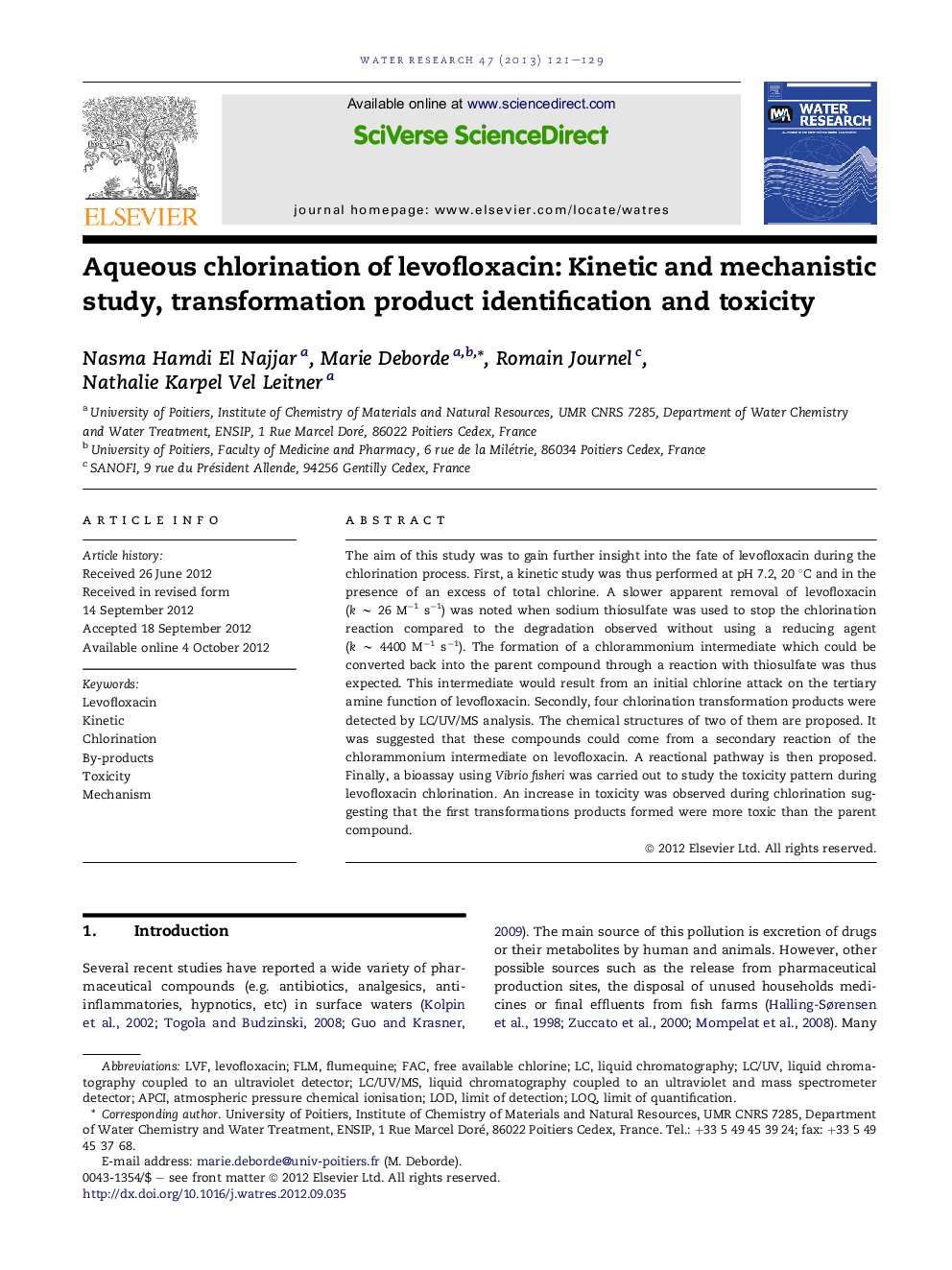| Article ID | Journal | Published Year | Pages | File Type |
|---|---|---|---|---|
| 4482521 | Water Research | 2013 | 9 Pages |
The aim of this study was to gain further insight into the fate of levofloxacin during the chlorination process. First, a kinetic study was thus performed at pH 7.2, 20 °C and in the presence of an excess of total chlorine. A slower apparent removal of levofloxacin (k ∼ 26 M−1 s−1) was noted when sodium thiosulfate was used to stop the chlorination reaction compared to the degradation observed without using a reducing agent (k ∼ 4400 M−1 s−1). The formation of a chlorammonium intermediate which could be converted back into the parent compound through a reaction with thiosulfate was thus expected. This intermediate would result from an initial chlorine attack on the tertiary amine function of levofloxacin. Secondly, four chlorination transformation products were detected by LC/UV/MS analysis. The chemical structures of two of them are proposed. It was suggested that these compounds could come from a secondary reaction of the chlorammonium intermediate on levofloxacin. A reactional pathway is then proposed. Finally, a bioassay using Vibrio fisheri was carried out to study the toxicity pattern during levofloxacin chlorination. An increase in toxicity was observed during chlorination suggesting that the first transformations products formed were more toxic than the parent compound.
Graphical abstractFigure optionsDownload full-size imageDownload high-quality image (101 K)Download as PowerPoint slideHighlights► We investigated the reaction of levofloxacin with aqueous chlorine at pH 7.2. ► Rate constants were determined and reaction kinetic was discussed. ► Chlorination transformation products were studied and reaction pathways were proposed. ► Acute toxicity of the chlorinated solutions was monitored by means of Vibrio fisheri assay.
